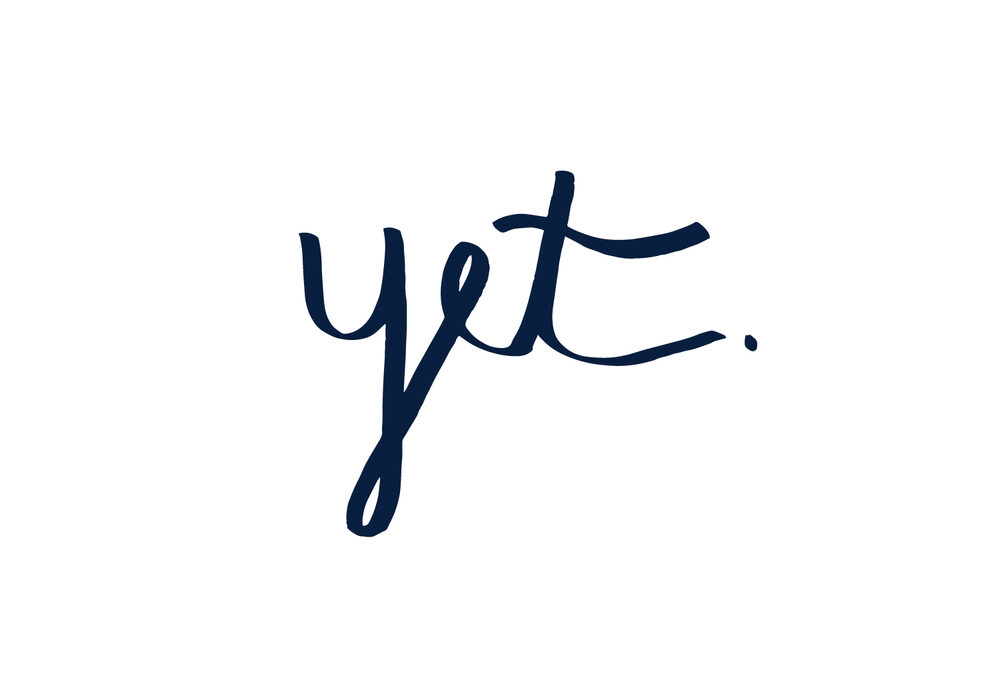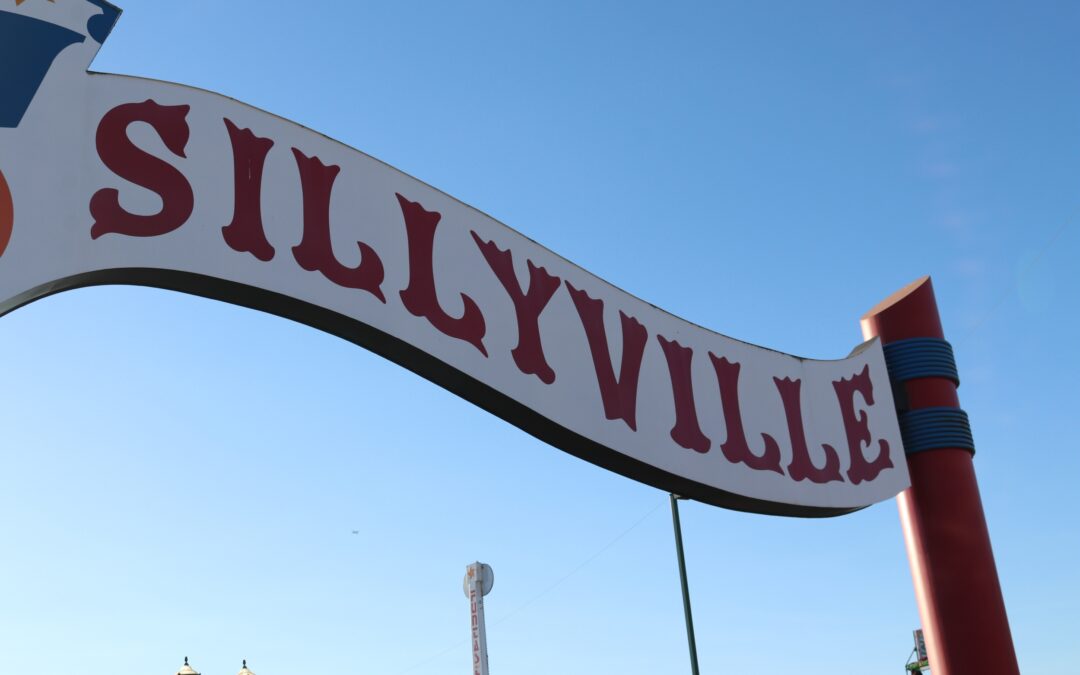
by Robyn Bolton | Mar 9, 2021 | Innovation, Stories & Examples, Tips, Tricks, & Tools
“You are a salmon.”
This was not the career advice I hoped for.
After months of tests, quizzes, career counseling sessions, and peer support groups, I was sitting in the expansive wood-paneled office of Harvard Business School’s Head of Career Services, eagerly anticipating learning what my ideal career would be. I did not expect to be told that I was a fish.
“You are only happy when you are rebelling against something. You are a salmon. Whatever you choose to do, you must swim upstream.”
This did not sound like a recipe for the peaceful, easy, frictionless career that I envisioned. This sounded like a career of frustration, struggle, and just generally being annoyed most of the time.
It was 100% accurate.
Innovators are salmon
Quick tutorial on salmon – they hatch in freshwater, swim out to the ocean and live in the saltwater before returning to freshwater to spawn and die (assuming the don’t get caught by a bear or fisherman first).
Quick tutorial on innovators – they are born (like everyone else) with creativity and a sense of unlimited possibility, they go out into the world and face the sting of reality before returning to their natural creative state to ask questions, challenge the status quo, drive growth, and (like everyone else) die.
Swimming upstream is exhausting for fish and for people. That’s why most don’t do it. That’s why most fish and people make the sensible choice to go with the flow, work within the system, and find better ways to do the same things.
But innovators, like salmon, instinctively know that to create, they must follow a different and much harder path. Instead of going with the flow, they must question the status quo. Instead of finding a better way to do the same things, they question whether those things even need to be done and create new ways to do new things.
Companies recognize that they need innovators. They need people who think differently and aren’t afraid to take smart risks because these are the people that will create new revenue streams and drive companies’ long-term growth. But, like the river, the company can’t change how it operates.
Companies need salmon ladders
Quick tutorial on salmon ladders – they are structures on or around natural barriers like waterfalls and dams, that have a high enough water velocity to attract the fish but not so much as to exhaust them, and often have very low steps that the salmon can leap up to get to their destination
Quick tutorial on innovation processes – they are structures separate from companies’ existing processes (and the barriers that often slow progress), that allow enough freedom for creativity and experimentation but not so much as to put the company at serious risk, and often have steps or stages that innovators and their projects must leap up in order to launch a scalable business.
Salmon ladders help salmon progress more rapidly and efficiently, decreasing the odds that they die from exhaustion before reaching their destination. Innovation processes help innovators progress ideas more rapidly and efficiently through an organization, decreasing the odds that they die (or quit, or get fired) before reaching their destination.
How to build a salmon ladder for innovators
Google “innovation process” and you will get 1.8 BILLION results in 0.59 seconds. That’s because there is no one magic innovation process that works for everyone.
But as varied as effective innovation processes are, they share common characteristics.
- People over process. If you announce the implementation of a new process, send out a user manual, and then walk away, the process will fail. If you involve people in designing and pressure testing the process, support them in the first 6-12 months of use, and they experience the value of the process for themselves, the process will succeed.
- Goals are good. Constraints are better. Innovation is an investment, and the company expects a return on that investment. Be clear about those expectations from the start. Innovation is not “anything goes!” Be clear about what the company is and is not willing to support before your start.
- Guidance, not direction. Innovation is filled with known unknowns and unknown unknowns and, for that reason, the path to launch isn’t a straight line. But it also can’t be an infinite loop. Innovation processes should set guardrails for the work to be done but shouldn’t be overly prescriptive.
- Insights, not information. Innovation processes should enable learning and encourage its sharing. Building in time for teams to reflect on their experience and write down their insights is critical for continued growth. Weighing the team down with detailed analyses, complicated templates, and constant update presentations doesn’t enable and encourage learning, it slows it down.
- Celebrate milestones, not just launches. More innovation projects will be stopped than will be launched. The stopped projects aren’t failures, they’re lessons learned and steppingstones to the next big launch. Celebrating the milestones that projects achieve, even the milestone of being stopped, will keep innovators energized and swimming upstream far longer than celebrating only the launches.
Innovators do the hard work of swimming upstream.
Help them out by building a process to guide and propel them.
After all, as one of my favorite poems points out,
If you move with the crowd, you’ll get no further than the crowd
…
Simply swimming with the tide leaves you nowhere.
So if you believe in something that’s good, honest, and bright – stand up for it.
Maybe your peers will get smart and drift your way

by Robyn Bolton | Mar 2, 2021 | Innovation, Leadership, Stories & Examples
The Horsemen are drawing nearer
On leather steeds they ride
They’ve come to take your life
On through the dead of night
With The Four Horsemen ride
Or choose your fate and die
– “The Four Horsemen” by Metallica
No scene from The Bible’s description of the Apocalypse has captured the popular imagination as much as that of the Four Horsemen. In Revelation 6, four beings are summoned, each riding out on a different colored horse – Conquest on a white horse, followed by War on a red horse, Famine on a black horse, and, finally, Death on a pale horse.
“The Four Horsemen” has been used as an analogy to describe everyone from Notre Dame football players to Supreme Court Justices, and referenced in books for everything from dealing with addiction to relationship counseling.
There are also Four Horsemen that foretell the end of innovation in a company
The White Horse: Short Term-ism
Like Conquest, Short Term-ism wears a crown and is hailed as a bringer of victory, prosperity, and health. After all, the only thing better than hitting your quarterly numbers is hitting them two quarters in a row. Then three, then four…
Short term-ism convinces you that the good times are here to stay if you just keep investing in today. Anxious to continue reaping immediate rewards and blind to the fact that it will end someday, executives dedicate more and more financial resources to short-term initiatives, reducing and ultimately killing long term investments
The Red Horse: Size
Size matters. Rulers fight wars to expand their empires. Executives spend, acquire, and merge to expand theirs.
The result is that an idea, business, or investment that was attractive 5 years ago needs to be 10x the size and 100x the certainty today. As companies get bigger the size of new products, business models, and revenue streams need to get bigger to move the needle.
I spoke to a CEO recently who lamented that he regularly shuts down ideas for new products because they’re “not big enough.” The irony, he told me, is that the new product that’s not big enough for today’s business would have doubled the size of the business 7 years ago.
But innovation often starts small, with a single spark, and needs to be incubated and nurtured over (a reasonable amount of) time. Companies that will only invest in big innovations that produce immediate results, don’t invest in innovation.
The Black Horse: Scarcity
When there’s not enough to go around, you have a famine. It can be food and water, or money and time. It can be real or perceived. It is always deadly.
We live and work in environments of scarce resources. Even the biggest companies don’t have infinite amounts of time, money, and people. That means that $1 spent on innovation (something new that creates value) is $1 NOT spent on the certainty of today’s business.
Trade-offs are a part of life. The problem is when trade-offs stop being seen as choices we make to achieve the best possible outcome, and start to become us-versus-them battles.
The result is corporate cage matches in which a small band of innovators must battle powerful business unit owners and influential functional heads for scarce resources. Spoiler alert, innovators rarely emerge victoriously.
The Pale Horse: Fear
Corporate innovators can survive short-term-ism, size requirements, and scarcity. They can’t survive fear.
Rarely is it their own fear – of failure, humiliation, or unemployment – that stops them. It is the fear that senior executives have of poor results, losing customers, no bonuses, and, yes, failure, humiliation, and unemployment.
Like Revelation’s depiction of Death as empty-handed and followed by Hades, its jaws open to receive Death’s victims, Innovation’s apocalyptic Pale Horse rider neither shows nor speaks of its fear and is usually followed by HR*, its arms open to welcome innovators into new roles in the core business.
Averting the Apocalypse
Unlike the Biblical Apocalypse, the Innovation Apocalypse can be stopped and even prevented.
To prevent the Innovation Apocalypse, embody the opposite mindsets and behaviors of the Four Horseman:
- Invest in the long-term and patiently wait for results
- Invest in things that start small but have the potential to grow
- Remember that growth isn’t about slicing up the same pie differently, it’s about making the entire pie bigger
- Confront fear and minimize real risk through experiments, pilots, and other small-scale tests
Of course, all of this is easier said than done.
The reality is that the Four Horsemen are already running rampant in most organizations. The only way to stop them from ushering in the Apocalypse is to confront them.
This takes guts.
It’s not easy or risk-free to challenge, however politely, a senior executives’ decisions that prioritize the short-term over the long-term, big business over small, preservation of resources over investment, and certainty over the unknown.
You may need to set-up a one-on-one conversation. You may need to pull someone in as an ally or messenger. You may need to talk to someone with the hopes that they can talk to the decision-maker.
But if you don’t speak up, the Horsemen will ride roughshod over your business and the Innovation Apocalypse will come.
* To be very clear, I am NOT equating HR to Hades. I love HR. They have a very important and very difficult job, and they are woefully under-appreciated. They also have the misfortune of being the people who show up immediately after an innovation initiate gets shut down with the task of picking up, reallocating, or separating the people left behind. Which, unfortunately, makes them a great element for this analogy.

by Robyn Bolton | Feb 24, 2021 | Innovation, Stories & Examples
Last week, pitchers and catchers reported to MLB Spring Training facilities in Florida and Arizona. For baseball fans, this is the first sign of Spring, an occasion that heralds months of warmth and sunshine, ballparks filled (hopefully) with cheering fans, dinners of beers and brats, and the undying belief that this year will be the year.
Of course, there’s still a lot of dark, dreary cold between now and Opening Day. Perfect weather for watching baseball movies – Bull Durham, Major League, The Natural, Field of Dreams, and, of course, Moneyball.
Moneyball is based on the book of the same name by Michael Lewis and chronicles the 2002 Oakland Athletics season. The ’02 Oakland A’s, led by General Manager Billy Beane (played by Brad Pitt), forever changed baseball by adopting an approach that valued rigorous statistical analysis over the collective wisdom of baseball insiders (coaches, scouts, front office personnel) when building a team. This approach, termed “Moneyball,” enabled the A’s to reach the postseason with a team that cost only $44M in salary, compared to the NY Yankees that spent $125M to achieve the same outcome.
While the whole movie (and book) is a testament to the courage and perseverance required to challenge and change the status quo, time and again I come back to three lines that perfectly sum up the journey of every successful intrapreneur I’ve ever met.
The Beginning
“I know you’ve taken it in the teeth out there, but the first guy through the wall…he always gets bloody…always always gets bloody. This is threatening not just a way of doing business… but in their minds, it’s threatening the game. Really what it’s threatening is their livelihood, their jobs. It’s threatening the way they do things… and every time that happens, whether it’s the government, a way of doing business, whatever, the people who are holding the reins – they have their hands on the switch – they go batshit crazy.”
John Henry, Owner of the Boston Red Sox
Context
The 2002 season is over, and the A’s were eliminated in the first round of the playoffs. John Henry, an owner of the Boston Red Sox, has invited Bill Beane to Boston to offer him the Red Sox GM job.
Lesson
This is what you sign up for when you decide to be an Intrapreneur. The more you challenge the status quo, the more you question how business is done, the more you ask Why and demand an answer, the closer you get to “tak(ing) it in the teeth.”
This is why courage, perseverance, and an unshakeable belief that things can and should be better are absolutely essential for intrapreneurs. Your job is to run at the wall over and over until you get through it.
People will follow. The Red Sox did. They won the World Series in 2004, breaking an 84-year-old curse.
The Middle
“It’s a process, it’s a process, it’s a process”
Bill Beane
Context
Billy has to convince the ballplayers to forget all the habits that made them great and embrace the philosophy of Moneyball. To stop stealing bases, turning double plays on bunts, and swinging for the fences and to start taking walks, throwing to first for the easy out, and prioritize getting on base over hitting a home run.
The players are confused and frustrated. Suddenly, everything that they once did right is wrong and what was not valued is deeply prized.
Lesson
Innovation is something new that creates value. Something new doesn’t just require change, it requires people to stop doing things that work and start doing things that seem strange or even wrong.
Change doesn’t happen overnight. It’s not a switch to be flipped. It’s a process to be learned. It takes time, practice, reminders, and patience.
The End
“When you get an answer you’re looking for, hang up.”
Billy Beane
Context
In this scene, Billy has offered one of his players to multiple teams, searching for the best deal. When the phone rings with a deal he likes, he and the other General Manager (GM) agree to it, Billy hangs up. Even though the other GM was in the middle of a sentence. When Peter Brand, the Assistant GM played by Jonah Hill, points out that Billy had just hung up on the other GM, Billy responds with this nugget of wisdom.
Lesson
It’s advice intrapreneurs should take very much to heart. I often see Innovation teams walk into management presentations with long presentations, full of data and projections, anxious to share their progress, and hoping for continued funding and support. When the meeting starts, a senior exec will say something like, “We’re excited by the progress we’re hearing about and what it will take to continue.”
That’s the cue to “hang up.”
Instead of starting the presentation from the beginning, start with “what it will take to continue.” You got the answer you’re looking for – they’re excited about the progress you’ve made – don’t spend time giving them the info they already have or, worse, could raise questions and dim their enthusiasm. Hang up on the conversation you want to have and have the conversation they want to have.
In closing
Moneyball was an innovation that fundamentally changed one of the most tradition-bound businesses in sports. To be successful, it required someone willing to take it in the teeth, to coach people through a process, and to hang up when they got the answer they wanted. It wasn’t easy but real change rarely is.
The same is true in corporations. They need their own Bill Beanes.
Are you willing to step up to the plate?

by Robyn Bolton | Feb 15, 2021 | Innovation, Leadership, Tips, Tricks, & Tools
Have you heard any of these sentences recently?
“We don’t have time”
“Our people don’t have the skills”
“We don’t have the budget”
“That’s not what we do”
I hear them all the time.
Sometimes they’re said when a company is starting to invest in building their innovation capabilities, sometimes during one-on-one stakeholder interviews when people feel freer to share their honest opinions, and sometimes well after investments are made.
Every single time, they are the beginning of the end for innovation.
But one word that can change that.
“We don’t have time – yet.”
“Our people don’t have the skills – yet.”
“We don’t have the budget – yet.”
“That’s not what we do – yet.”
Yet.
Yet creates space for change. It acknowledges that you’re in the middle of a journey, not the end. It encourages conversation.
“We don’t have time – yet.”
“OK, I know the team is busy and that what they’re working on is important. Let’s look at what people are working on and see if there are things we can delay or stop to create room for this.”
“Our people don’t have the skills – yet.”
“Understand, we’re all building new skills when it comes to innovation. Good news, skills can be learned. Let’s discuss what we need to teach people and the best way to do that.”
“We don’t have the budget – yet.”
“I get it. Things are tight. We know this is a priority so let’s look at the budget and see if there’s a way to free up some cash. If there’s not, then we’ll go back to leadership and ask for guidance.”
“That’s not what we do – yet.”
“I know. Remember, we’re not doing this on a whim, we’re doing this because (fill in reason), and we have a right to do it because of (fill in past success, current strength, or competitive advantage.”
You need to introduce the Yet.
It is very rare for people to add “yet” to their statements. But you can.
When someone utters an innovation-killing statement, respond with “Yet.” Maybe smile mischievously and then repeat their statement with “yet” added to the end.
After all, you’re not disagreeing with them. You’re simply qualifying what they’re saying. Their statement is true now, but that doesn’t mean it will be true forever. By restating their assertion and adding “yet,” you’re inviting them to be part of the change, to take an active role in creating the new future state.
There’s a tremendous amount of research about the massive impact of this little word. It helps underperforming students overachieve and is closely associated with Dr. Carol Dweck’s research into fixed and learning mindsets.
The bottom line is that “yet” works.
Put Yet to work for you, your organization, and your efforts to innovate and grow.

by Robyn Bolton | Dec 30, 2020 | Innovation, Tips, Tricks, & Tools
According to a 2018 survey by NPR and The Marist Poll, the most common New Year’s resolution is to exercise more. Not surprisingly, losing weight and eating a more healthy diet ranked third and further, respectively (“stop smoking” was #2, in case you’re curious).
Hitting the gym to drop weight and build muscle is a great habit to build, but don’t forget about the regular work needed to build other muscles.
Specifically, your innovation muscles.
Innovation mindsets, skills, and behaviors can be learned but if you don’t continuously use them, like muscles, they can weaken and atrophy. That’s why it’s important to create opportunities to flex them.
One of the tools I use with clients who are committed to building innovation as a capability, rather than scheduling it as an event, is QMWD – the Quarterly-Monthly-Weekly-Daily practices required to build and sustain innovation as a habit.
QUARTERLY
Leave the office and talk to at least 3 of your customers
It’s tempting to rely on survey results, research reports, and listening in on customer service calls as a means to understand what your customers truly think and feel. But there’s incredible (and unintended) bias in those results.
Take, for example, this story from former P&G CEO AG Lafley:
One very quick story; I will never forget this. We used to do annual research in the laundry detergent business, and every year consumers would rate the Tide powder cardboard package as excellent; excellent to shop; excellent for opening; excellent in use–on, on, on.
So, probably 27 or 30 years ago, I’m in basements in Tennessee, in Kentucky, doing loads of laundry with women, and after three or four or five of these one-on-one sessions, I’ve realized that not a single woman has opened a box of Tide with her hand. Why not? You’ll break your fingernails!
So, how did they open the box? They had nail files; they had screwdrivers; they had all kinds of things sitting down on the shelf over their washing machine, and yet they thought our package was excellent. And we thought our package was excellent because they were telling us our package was excellent. We had to see it and experience it.
Here’s the problem–consumers cannot really tell us what they want. They can tell you why they like it or why they don’t like it, but they cannot tell you what they want.
Schedule a day each quarter to get out of the office and meet your customers. Ask them what they like and what they don’t. More importantly, watch them use your products and then share what you heard and saw with your colleagues.
MONTHLY
Share with your team a mistake you made and what you learned from it
Silicon Valley mantras like “fail fast” and “fail often” make for great office décor but, let’s be honest, no one likes to fail and very few companies reward it.
Instead of repeating these slogans, reframe them to “learn fast and learn often” and role model the behavior by sharing what you learned from things you did that didn’t go as expected. You’ll build a culture of psychological safety, make smart risks acceptable, and increase your team’s resilience. All things required to innovate in a sustainable, repeatable, and predictable manner.
Do 1 thing just for the fun of it.
In the research that fed into their book, The Innovator’s DNA, professors Jeff Dyer, Hal Gregersen, and Clayton Christensen, found that the most common characteristic amongst the great innovators of our time was their ability to associate – “to make surprising connections across areas of knowledge, industries, even geographies” (page 41). Importantly, their associative thinking skills were fed by one or more “Discovery Skills” – questioning (asking “why,” “why not,” and “what if”), observing, experimenting, and networking.
Fuel your associative thinking ability by doing something NOT related to your job or other obligations. Do something simply because it interests you. You might be surprised where it takes you. After all, Steve Jobs studied calligraphy, meditation, and car design and used all of those experiences in his “day job.”
WEEKLY
Make 1 small change for 1 day
Innovation requires change and, if you’re an innovator, that’s the exciting part. But most people struggle with change, a fact that can be frustrating for change agents.
In order to lead people through change, you need to empathize with them and their struggles which is why you need to create regular moments of change in your work and life. One day each week, make a conscious change – sit on the other side of the conference room table, take a different route to the bathroom, use a black pen instead of a blue one. Even small changes like this can be a bit annoying and they’ll remind you that change isn’t always the fun adventure you think it is.
DAILY
Ask “How can we do this better?”
Innovation is something different that creates value. Which is good news because that means that all it takes to be an Innovator is to DO something DIFFERENT and create VALUE. The easiest way to do that is to find opportunities for improvement.
The next time you’re frustrated with or confused by a process, ask “how can we do this better?” Better can be more simply, faster, cheaper, or even in a way that is more enjoyable but, whatever it means, the answer will point the way to creating value for you, your team, and maybe even your company.
In closing…
Block time on your calendar for these quarterly, monthly, weekly, and daily habits. After all, the best reflection of your priorities are the things in your calendar. And, if you stick with this, you’ll be among the 8% who achieve their New Year’s goals.
Originally published on December 5, 2019 on Forbes.com

by Robyn Bolton | Dec 22, 2020 | Innovation, Leadership, Strategy
“The definition of insanity is repeating the same actions over and over again and expected different results.”
This quote, often (wrongly) attributed to Albert Einstein, is a perfect description of what has been occurring in corporate innovation for the last 20+ years.
In 1997, The Innovator’s Dilemma, put fear in the hearts of executives and ignited interest and investment in innovation across industries, geographies, and disciplines. Since then, millions of articles, thousands of books, and hundreds of consultants (yes, including MileZero) have sprung forth offering help to startups and Fortune 100 companies alike.
Yet the results remain the same.
After decades of incubators, accelerators, innovation teams, corporate venture capital (CVC), growth boards, hackathons, shark tanks, strategies, processes, metrics, and futurists, the success rate of corporate innovation remains stagnant.
Stop the insanity!
I have spent my career in corporate innovation, first as part of the P&G team that launched Swiffer and Swiffer WetJet, later as a Partner at the innovation firm founded by Clayton Christensen, and now as the founder of MileZero, an innovation consulting and coaching firm.
I have engaged in and perpetuated the insanity, but I’ve also noticed something – 90% of what we do in corporate innovation speaks to our logic and reason, it’s left brain focused, and 10% speaks to creativity and imagination, our right brains. BUT 0% of our work speaks to the hearts hopes, fears, beliefs, desires, and motivations of the corporate decision-makers who ultimately determine innovation’s fate.
We spend all out time, effort, and money appealing to their brains when, in reality, the decisions are made in their hearts.
Of course, no corporate executive will ever admit to deciding with their heart, after all, good management is objective and data-based. But corporate executives are also human, and, like other humans, they make decisions with their hearts and justify it with their heads.
Consider this very common scenario:
A CEO announces to investors and employees that “Innovation” is a corporate priority and that the company will be making a “significant” investment in it over the next 3 years. A Chief Innovation Officer is put in place and Innovation Teams start popping up in every Business Unit (BU).
These BU Innovation Teams are staffed with a few people and given budgets in the hundreds of thousands of dollars. They are told to use Design Thinking and Lean Startup methods to create new products or services to better serve existing or new customers.
Each BU team, excited by their new mandate and autonomy, fan out to talk to customers, host brainstorming sessions, and create prototypes. They pull together business cases showing the huge potential of the new product or service and run experiments to prove early market traction. They meet regularly with the BU President and other key decision-makers.
Everything is going perfectly until, about a year into the work, the company has a bad quarter, or the BU is likely to miss expectations, or an innovation experiment delivers worse than expected results.
Suddenly, everyone is a skeptic. Budgets get cut. Team members are re-assigned to “help” other projects. The team’s portfolio shrinks to a single project. And like that – poof – the Innovation Team is gone.
As apocalyptic as that scenario may seem, the numbers back it up. According to research by Innovation Leader, the average tenure of a Chief Innovation Officer is 4.18 years while an Innovation Manager’s tenure is 3.3 years.
What went wrong? The company did everything by the book – they hired the right talent, established dedicated teams with dedicated budgets, talked to customers and created a portfolio of ideas, built prototypes and made small bets.
Innovation is an investment in the future so one bad quarter shouldn’t be its death knell. But it is.
The reason is that executives know that innovation must be invested in today to produce results in the future, but they do not believe that they will be rewarded for prioritizing the future over the present.
This belief then leads to fear about the uncertainty of future returns and the repercussions of failing to deliver the present, which then leads to fear that their career will stall or that they will lose their job, which then spirals into all sorts of other fears until, eventually, the executive feels forced into a “them or me” decision.
They decide with their heart (fear) and justify with their head (bad quarter).
The solution to this is neither simple nor quick but it is effective – we must dedicate as much time and effort to recognizing and addressing the thoughts, feelings, and mindsets (heart) that executives and key decision-makers face in the pursuit of corporate innovation as we spend on the structures, processes, and activities (head) of corporate innovation.
If this sounds like coaching, you’re right. It is. Just as executives benefit from coaching as they take on new and greater responsibility, they also benefit, in the form of increased confidence and better results, when they have coaches guide them through innovation. This is because innovation often requires executives to do the opposite of what they instinctively do when managing the core business.
Innovation is a head AND a heart endeavor, and we need to start approaching it as such.
To do anything less is the definition of insanity.
*** Originally published on on Forbes.com ***





